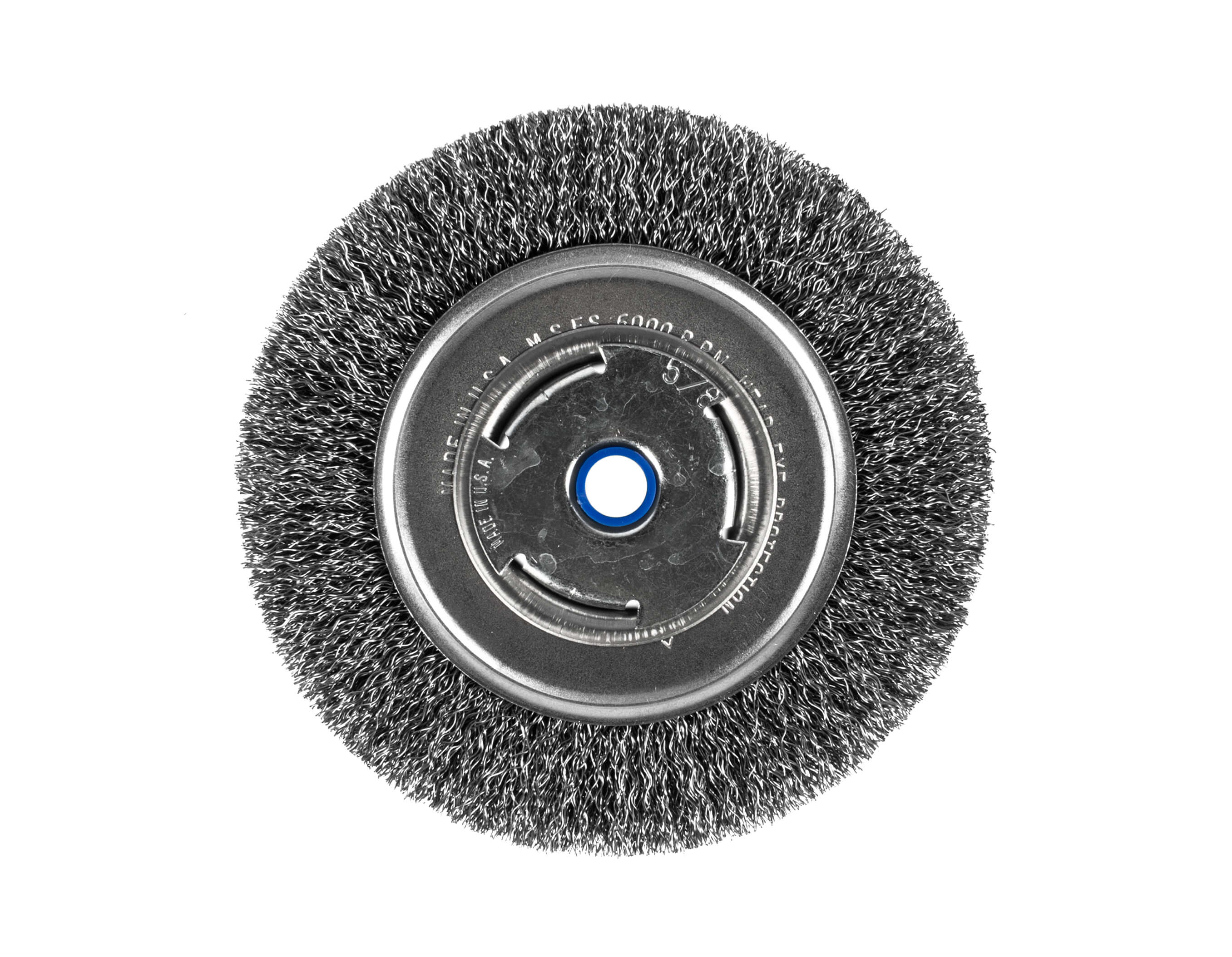
If the disk wobbles, check the sizing, RPM, and integrity of the disc. Observe the wire wheel for one minute, checking for strange vibration or wobbling. Connect the grinder to power, and turn it on.Adjust the guard so it is between the wheel and your face.
#WIRE WHEEL GRINDER FULL#
Put on goggles or glasses with side protection and a full face shield. Place the new disk on the drive bolt of the spindle and check that it lays flat. Lift the existing disk off of the spindle.When you’re ready to switch back to discs, it’s helpful to have photo evidence of where you put the locking nut. If you are installing a wire cup brush, put the locking nut somewhere very safe and snap a photo of it. Wire cup brushes, unlike wire wheels, are threaded directly onto the angle grinder spindle. If your angle grinder does not have a spindle lock, you’ll need a special flat wrench to hold the spindle in place while you remove the locking nut. When you press this button, the spindle is immobilized. Some models include a wheel lock button or spindle lock button. Place the angle grinder in a clean and well lit area, with the underside of the grinder facing up. Disconnect the angle grinder from power by unplugging it or removing the battery.The wheel you attach to your angle grinder must be capable of spinning at the RPM of your angle grinder without risk of disk failure.Īttaching the Wire Wheel to the Angle Grinder All angle grinder attachments have the maximum RPM for which they are rated listed on their packaging. A fine or very fine wire is better when a smooth finish is important, while a coarse wire will work more quickly and remove more material.īefore you make a purchase, determine the RPM of your angle grinder. The diameter of the wire indicates its suitability for various jobs. The bristles of the brush should be evenly spaced and stand up straight.Ī worn out or patchy wire wheel is at risk of getting caught on the material and causing kickback. On a knotted wire wheel, the bristles have been separated into groups, which are then twisted together for faster and more powerful debris removal.Crimped wire wheels have many individual bristles, are more flexible, and are used to remove softer materials.This leads to unpredictable outcomes and could cause you to lose control of the machine. When inappropriately sized tools are attached to an angle grinder, they can vibrate, wobble, or become unbalanced.
#WIRE WHEEL GRINDER INSTALL#
While it may be tempting to install a larger wheel on your angle grinder to get the job done more quickly, this is a bad, unsafe idea. If it is important to minimize sparks, such as in a potentially flammable environment, a brass wire brush should be used. Carbonized steel wire wheels contaminate stainless steel, so use a stainless steel wire brush instead. Select the correct wire wheel for your application.

This perpendicular removal attachment is best for nooks, crannies, and small areas, and can be attached just like any other disc-shaped angle grinder attachment. Slag, paint, rust, and welding splatter are no match for the power of an angle grinder and wire wheel.
#WIRE WHEEL GRINDER HOW TO#
The tool can be dangerous, though, so it is important you learn how to use an angle grinder properly. It is primarily a removal tool, and can cut also through wood, tile, brick, stone, pavers, cast iron, and concrete. How to Install Wire Wheels on an Angle GrinderĪ great angle grinder is suited to many different applications. It is important to use proper safety techniques to minimize the risk of angle grinder accidents. When these wires disengage from the base of the wheel, they become sharp and penetrating projectiles. The bristles are usually made from springy and hard steel, but other materials are sometimes used, such as brass, and stainless steel.


 0 kommentar(er)
0 kommentar(er)
